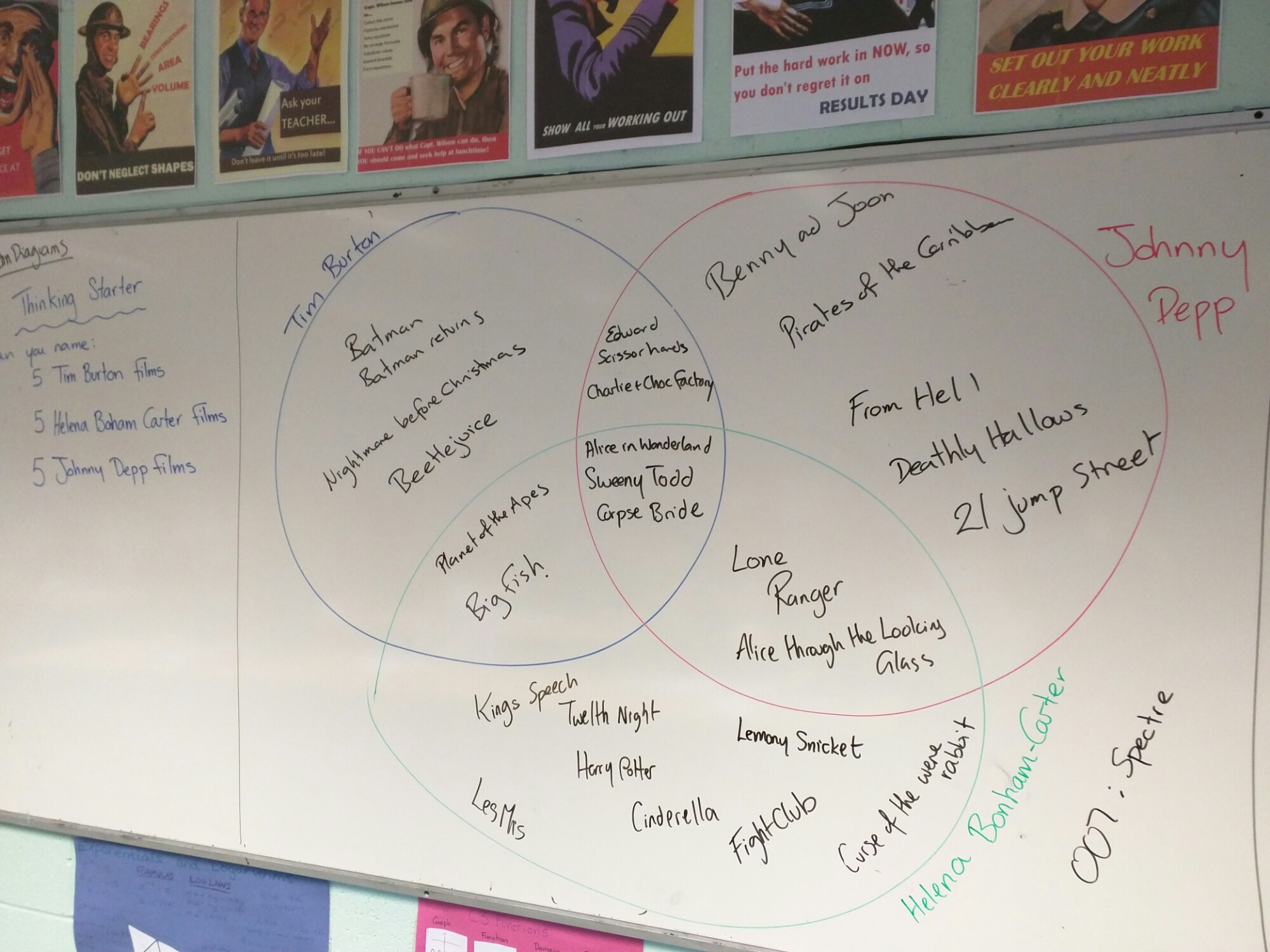My next class neighbour, Mr D, has been evangelising about venn diagrams since he did the TAM (Teach A-level Mathematics) course. His lesson on equations and graphs using venn diagrams was brilliant! Then, at MathsConf5, Craig Barton (@mrbartonmaths) shared his love of venn diagrams.
And they are on the new english GCSE Maths syllabus.
In light of all this, I introduced venn diagrams as a vehicle for probability (Y10) and rounding (Y9).
Introduction
First of all I used the films of Tim Burton, Johnny Depp and Helena Bonham-Carter to introduce a triple venn diagram, with the box to represent everything – I like dropping in the proper forms or technical bits early on in all topics.
We had quite a lengthy conversation about films, including why the Bond film could be on the diagram. The discreet use of IMDB (with my permission) settled some arguments too!
Rounding
I wanted my Year 9s to consider the differences and similarities between different forms of rounding. I created a simple diagram for them to complete where they compare ‘nearest ten, ‘one decimal place’ and ‘two significant figures’. You can download it here:
Rounding Venn Diagram worksheet
Probability
For my probability lesson I used the probability PowerPoint by Craig Barton. You can link to his resources here:


 Image credit: www.fudds.ca
Image credit: www.fudds.ca